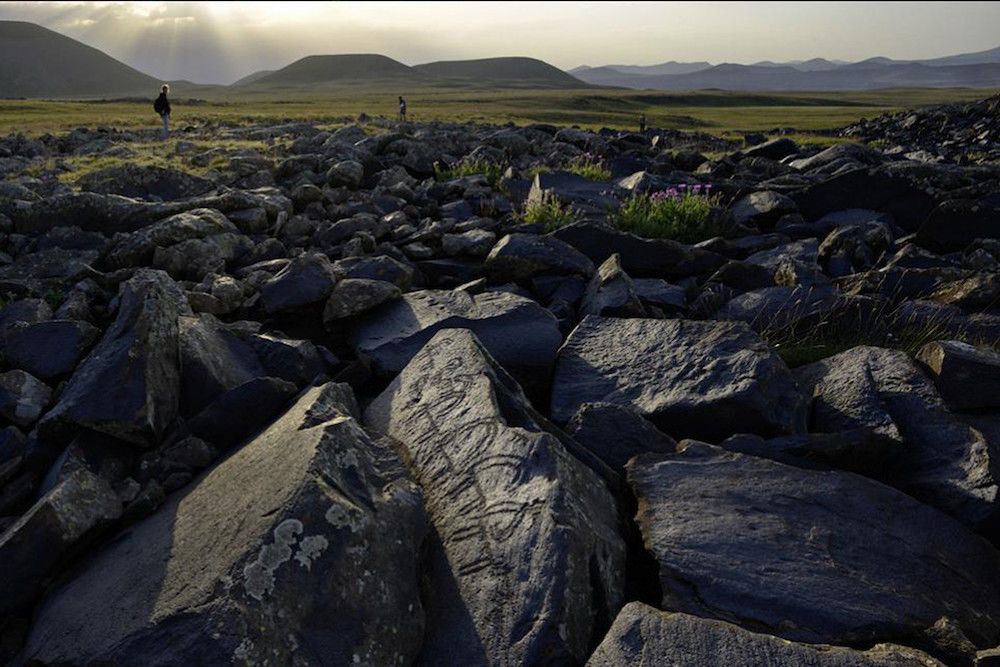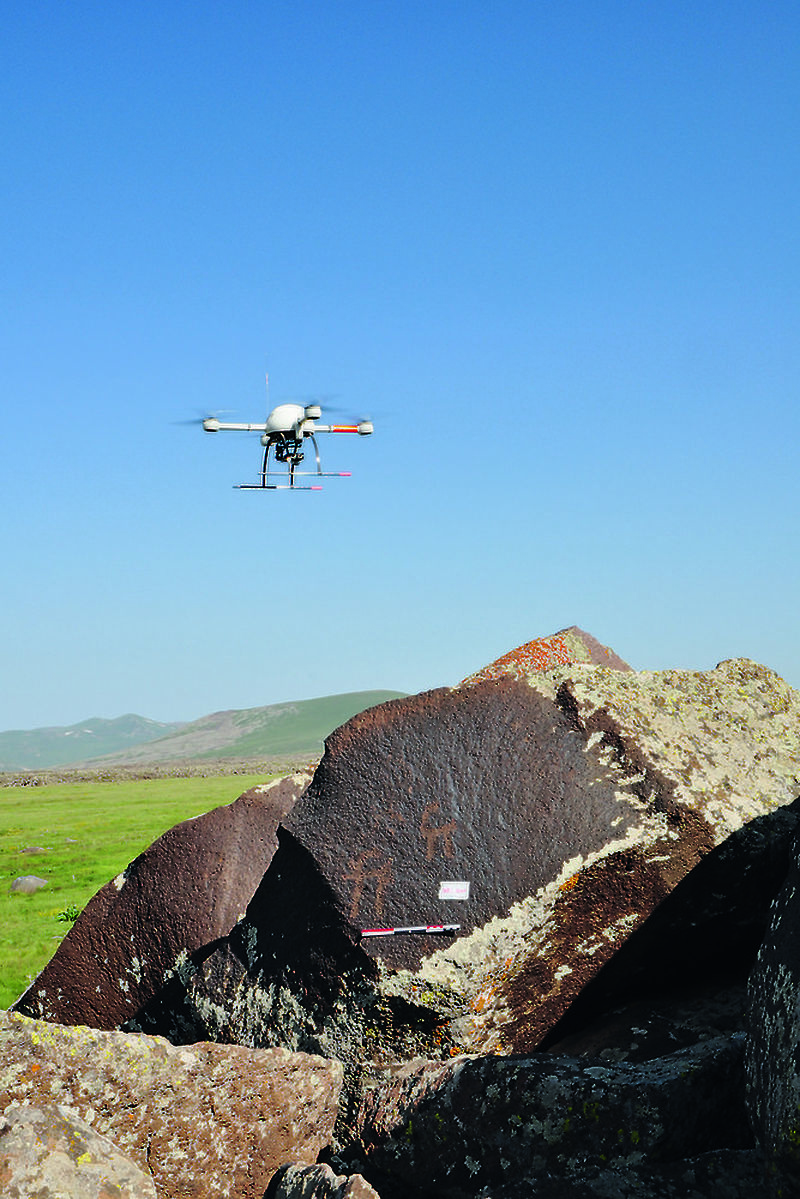Rocks relay messages from the Bronze Age

“The chances of getting the UNESCO title are good,” says Saxony-Anhalt’s state archaeologist Dr. Harald Meller, who is also an honorary professor at Halle’s university. “One prerequisite, though, is extensive scientific documentation of the pictures.”

The archaeological site, which was discovered in the 1950s, is located around 3,000 meters up in the Armenian highlands. The project is overseen by Saxony-Anhalt’s Office of Heritage Management and Archaeology in cooperation with the Republic of Armenia’s Academy of Sciences and the universities of Yerevan and Halle. Harald Meller’s research group started work on the unique finds in 2012 and has so far documented well above 5,000 cliff drawings i.e. petroglyphs. Yet this is only a fraction of what makes up tens of thousands of prehistoric treasures.
Scientists, students and survey engineers went to the petroglyph region and developed a fully new method of recording. A remote controlled drone was indispensable to the experts as it helped to photograph in detail the area dotted in survey markers. “We took photos of individual petroglyphs, made terrain models and maps, and documented the finds,” says Meller.
Along the migration routes of hunters and herdsmen
The petroglyphs are in impressively good shape. The archaeologist also finds it interesting that the figures of snow leopards, deer, ibex, goats, bears and people are limited to their characteristic features. However, it is extremely difficult to date the paintings. The majority are easily identifiable as being from the Bronze Age since they depict some specific symbols and images of characteristic carts and weapons. Yet the prevalence of older and newer depictions cannot be excluded.
The mysterious pictures also provide clues in and of themselves. In a typology, the experts record how often and in which context an animal is represented, and attempt to unravel the content and context of the drawings.
In addition to the prevalent animal motives, sword fighters, archers and superhuman beings, such as shaman, are portrayed along with carts and abstract symbols. The unique petroglyphs may represent locations that were important for nomads, hunters and herdsmen well into the 1960s as some of the inscriptions suggest. In the summer months, the highlanders left behind their engraved messages in the lava rock along their migration routes.
The scientists discovered that the cliff drawings are particularly strung out along waterways that developed from glacial lakes and rivers and springs. These are also the paths along which the semi-nomadic people drove their herds to their summer pastures. In mid-September the scientists finished their on-site recording of the petroglyph region as part of a third and, for now, final campaign. Their next objective is to painstakingly compile data on the selected regions according to the participating disciplines, like archaeology, geology, topography, volcanology and archaeometry.
The documentation and presentation of the petroglyph region is also needed for a comprehensive assessment later on and will form the basis for the application for the World Cultural Heritage title. Many comparable Central European cliff art sites already have UNESCO’s World Cultural Heritage status. Syunik would become the second location in the Caucuses, joining Gobustan in Azerbaijan.
Exhibitions in Armenia, Berlin and Halle
The State Office of Heritage Management and Archaeology presented the research finding to a wider audience for the first time in 2013 in an exhibition in the atrium of the Foreign Office in Berlin. The Foreign Office lent significant support to the research in past years as part of its cultural preservation programme. In March 2014 photos and text about the excavation of the prehistoric Armenian cliff art finds were displayed in Halle’s Ratshof on twelve panels entitled “Pictures for Eternity – Petroglyphs in the Highlands of Armenia”.
The German Embassy in Armenia prompted additional exhibits in Yerevan and Sisian in the summer of 2014. Saxony-Anhalt has been representing Germany in cultural cooperation projects with Armenia since 1996 based on a cultural agreement between the Federal Republic of Germany and the Republic of Armenia. Now people from Saxony-Anhalt will be helping Armenians in the coming years to obtain the World Cultural Heritage title.
